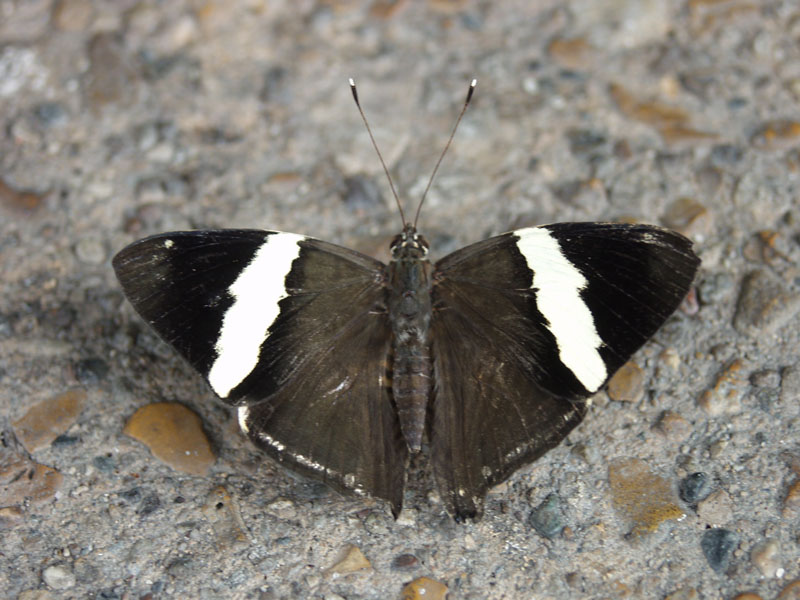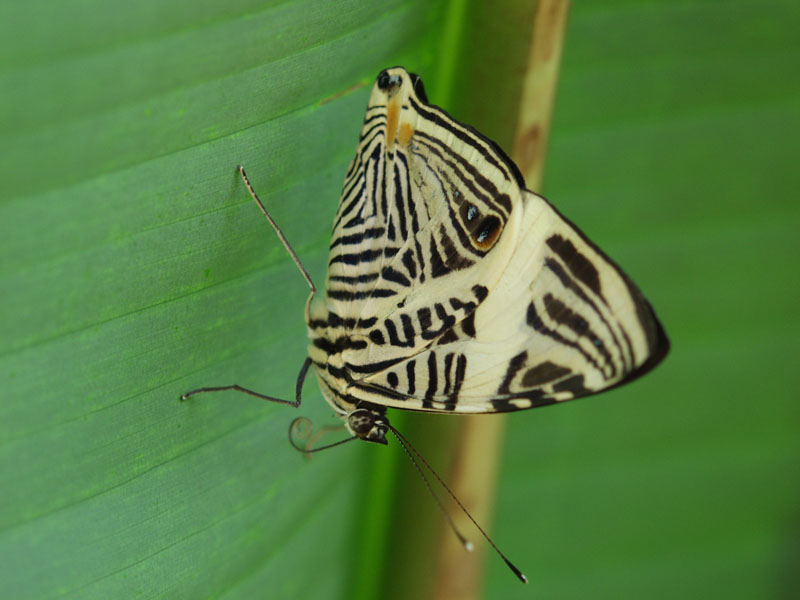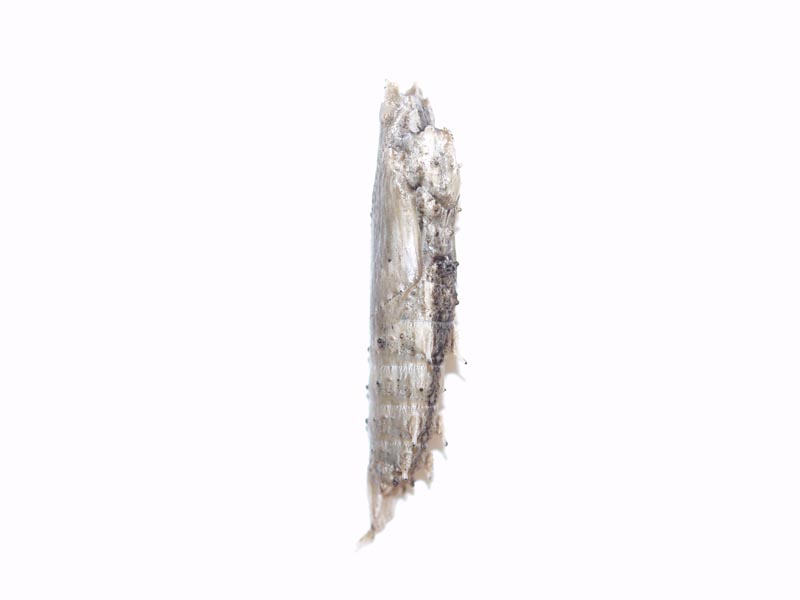


The butterflies eat rotting breadfruit, bananas and other tropical fruits, carrion, dung, and sometimes even visit wet laundry, but they rarely eat nectar from flowers.
“Kolobos” is a Greek word meaning truncated, which is the shape of their wings. Dirce is the Latin name of a spring in Thebes, Greece.
Mosaics are very common and live in lowland to mountainous rainforests full of Cecropia trees.
The female lays the eggs in clusters on the top of Cecropia leaves. When they hatch, the caterpillars feed in large throngs that include all the instars. To protect themselves during the day, the caterpillars create a shelter out of the leaf by cutting the secondary veins. The adults like to rest on shady tree trunks with their heads pointing downward. They open and close their wings as they rest.
There are multiple broods each year which make it possible to find adults flying year round.
The Cecropia trees have Azteca ant colonies living in the hollow internodes between leaves that protect the trees from predators. The Mosaic butterflies prefer to lay their eggs on trees without these ants.